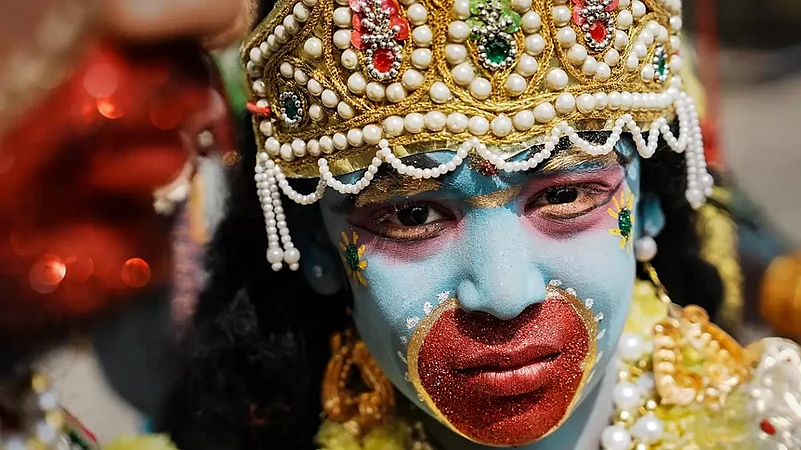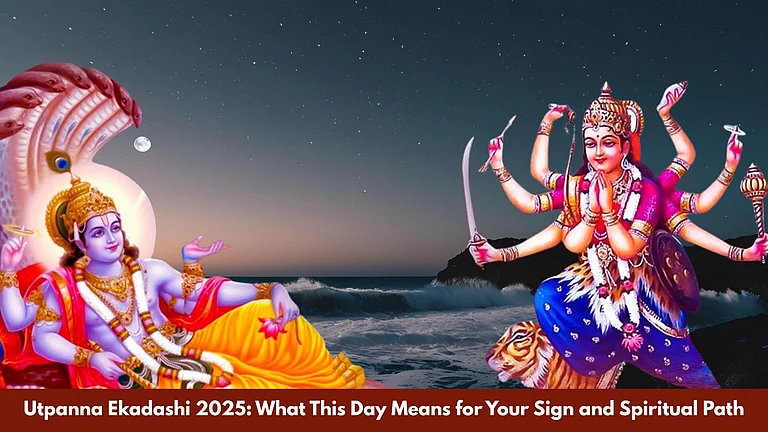Bhagwan Ram, more honorably known as the “Maryada Purushottam” has been the epitome of virtues in Hindu culture for ages, inspiring through written accounts such as “Ramayana” and “Ramcharitmanas” to all age groups, from children to senior citizens alike. Many know of his dramatic and exuberant life events and deeds but how many are aware of the story behind his birth that eventually came into being known as “Ram Navami”? Well, here it is, the answer to this question. Starting, let’s bifurcate the meaning of the name of the festival itself.
A Divine Birth
“Ram Navami”, the conjunction of two words ‘Ram’ and ‘Navami’ is pretty self-explanatory in itself but digging deeper the meaning arises as the name of God being conjoined with the tithi (specific lunar cycle in the Hindu calendar) of his birth, that is, ‘Navami’. Lord Ram was born in Navami tithi of Chaitra Shukla paksha under the gracious nakshatra of Punarvasu. He is believed to be the 8th incarnation of Bhagwan Vishnu who took birth to Kaushalya and Dashratha to vanquish evil and re-establish righteousness on Earth.
The birth of the divine incarnation of God wouldn’t have been possible without two important sages, namely, Shringi rishi and Vashishtha rishi. Vashishtha Rishi was the Kul Guru of Suryavansh and the Guru to King Dashratha as well. With his guidance, King Dashratha felt compelled to have a child who could manage the affairs of the Suryavansh Raghukul dynasty after him and lead righteously and dutifully all the people. Shringi rishi on the other hand performed the divine yagna (fire ritual) to please the Gods and ask the boon of a child for King Dashratha. Agni Dev himself appeared during the yajna and offered the prasad to Shringi rishi which he later distributed among the three wives of Dashratha namely, Kaushalya, Sumitra, and Kaikeyi.
One auspicious day, on Navami tithi, during the afternoon Lord Vishnu appeared in his magnificent four-armed form in front of Queen Kaushalya and revealed to her the birth of Ram. Right after the divine deliverance Lord Vishnu transformed into a newborn baby on the laps of Kaushalya. The whole of Ayodhya was thrilled with the news and rhythms of joy filled the air of the whole dynasty. The saints were overjoyed, the Saryu river overflowed with bliss, the birds chirped in melody and every element of nature was rejoicing in the birth of their beloved God.
Along with Ram, Lakshman and Shatrughna were born to Queen Sumitra and Bharata was born to Queen Kaikeyi. Legends say that Lakshman was the Sheshnag avatar whereas Shatrughna was a Shankh (conch) avatar and Bharat was an avatar of the Sudarshan chakra of Lord Vishnu.
Festive Expressions
Ram Navami is celebrated vibrantly across many parts of India in varied ways. Some are simple and compact whereas others reach the zenith of social joyfulness. The most famous thing dedicated to the Ram Navami celebration is the Ram Leela play where theater artists portray different characters of Ramayana and showcase a specific event amongst it or play the whole Ramayana story for the audience. People are filled with devotion and love for their God while enjoying the act and it is one of the most enthusiastic ways of celebrating this festival for them.
Many other activities include Shobha Yatra, Rath Yatra, Prabhat Feri, Prasad Bhandara etc. Prabhat feri is a mini procession taken out exclusively in the morning hours in association with a certain deity for a specified cultural or religious event.
Shobha Yatra is similar to Prabhat Feri except for its more grand and crowded. Rath Yatra consists of having an idol of God on a cart being pulled in local streets where people can offer their obeisances and prayers while it’s passing by. Prasad Bhandara is like an act of charity where free food is distributed among people after the rituals in the temple are finished.
Devotees visit their nearby temples and take part in bhajan, Satsang, and Ramayana Katha to immerse themselves in spiritual bliss. Geet Ramayana is another trending activity in Maharashtra where dance is taken as a medium to represent and convey the beautiful stories of Ramayana. Classical dance forms are mainly performed in this act.
Kathak, Bharatnatyam, Odissi, etc performances are also prevalent in the grandiose celebration of Ram Navami.
Symbolism and Legacy
Lord Ram holds a great place in the hearts of Hindus as the best king to ever walk on earth, the most dutiful son, the most loyal husband, and overall a great personality who served his fate in truthfulness and loyalty no matter what. Eulogies of his bravery are great and stories of his mercy are dissolved in the hearts of every Hindu. Not only was he righteous, but brave, courageous, patient, virtuous, merciful and big-hearted. On his path, he has always offered love and respect to whatever came his way and blessed salvation to those who sought it, whether directly in the form of devotees or indirectly in the form of demons or ogres.
With all such blazing virtues brimming up, it’s only natural for people to celebrate his birthday so magnificently in all the auspiciousness. It’s the day to remember these traits and take a step forward into imbibing them into ourselves. It’s the day of expression for the devotees who seek to show their love openly. It’s Ram Navami to cherish virtuous human qualities and remember the divinity within as well.



























